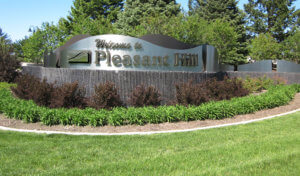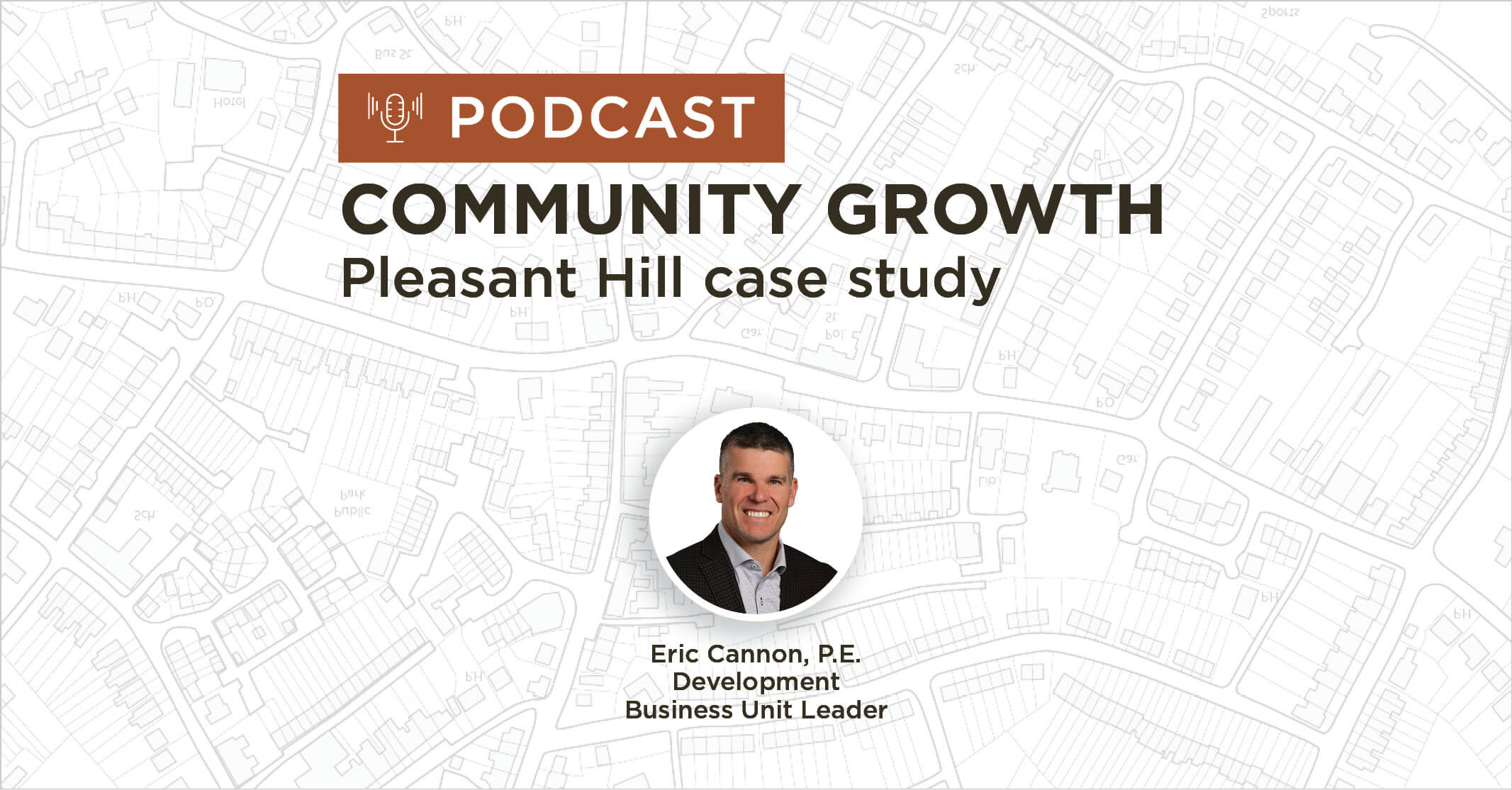Importance of Concept Planning in the CIP Process
An effective Capital Improvement Plan (CIP) can help cities prioritize projects and chart a course for the future. Join in as Civil Engineer and Planning expert Eric Cannon, P.E., shares the successes that have resulted from over a decade of partnership with Pleasant Hill, Iowa.
While the communities original CIP process consisted of a roughly sketched-out “wish list” of projects drawn up on a whiteboard in the basement of the public works building, we’ve since worked with leaders to help formalize their plan. By providing concept planning and cost estimates, we’ve given them a better understanding of their community needs and the associated project costs. These updated features have helped Pleasant Hill adapt to its rapid growth and better coordinate with state and local entities to plan and complete large projects.

Eric Cannon, P.E.
Development Business Unit LeaderEric Cannon, P.E.
Development Business Unit LeaderSubdivision and Site Development Engineering, Stormwater Modeling, Master Planning, Municipal Engineering, Construction Assistance
City of Pleasant Hill Case Study
Eric Cannon (0:17)

Our Team has been helping the community of Pleasant Hill plan out future projects and goals for over a decade.
We’ve been working with Pleasant Hill for about 12 or 13 years now. Their original CIP consisted of a whiteboard in the basement where you had public works people sketching out projects when people would call
and complain or for somebody’s wish list. They really looked for an opportunity to formalize that and understand what the needs were and what the costs of all that was going to be.
I got all the booklets here. The first one I’ve got out here is in 2012, which is when we put the first one together. I would say that was a little bit more of a process. There were several meetings with the city, the council, with a lot of the staff members, and we had to take all those projects down.
What we like to do is put a concept plan together where we’ve got an aerial background, and we sketch out where the road’s going to go, and then we accompany that with a cost estimate. I think it helps everybody see visually what the commitment is going to be but also understand the underlying costs to it. It helps us really narrow those costs down, too, because when you’re sketching it in or putting that concept together, you start thinking about drainage, utilities, and all those other things that might be associated with it.
We started that in 2012, and then what we’ve done is that every three years, they reach out to us, and we update that booklet. We got projects that get taken care of, and we knock those off the list. Then we get new priorities that come into town, new infrastructure commitments that need to be done, and update that list. We did that in 2012, 2015, and then 2018. What I find interesting is the first list we had was 15 projects and about $10 million worth of work. The second one we did in 2015 turned into 20 projects at about $28 million worth of work. The last one we just did here in 2018 was 39 projects and just shy of $70 million. Some of those are big, huge commitments. The southeast connector in Pleasant Hill was a big multi-year project, multi-jurisdiction with the DOT and the City of Des Moines, so that number is a little skewed. I think it shows the forward-thinking and the needs of these communities continue to grow as the communities continue to grow.
As we updated all those booklets, that process went a lot smoother and a lot easier. It went from multiple meetings with multiple people, putting that booklet together, and figuring out the format to now we just update it every three years. There are a couple of meetings with the city, and then we come back and update either the cost estimates on projects that aren’t done, so they get real-time costs or get the new projects plugged into the book and get that back out to everybody. Then the mayor has a copy, the city manager has a copy, the community development director has a copy, and public works has a copy. So everybody has got that booklet, and they can talk off of it. You’d be surprised how many times it comes up in council meetings where, hey, you know, that one project we talked about putting that road over there? Then they’ll say, hey, what’s that cost estimate? Then, people will flip open their books. So it really becomes a living document that people use over the years.
